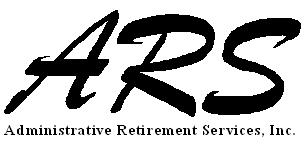Recently all the excitement in IRAs has been the ability to convert pre-tax IRA monies to Roth IRA monies. Effective September 27, 2010 with The Small Business Jobs and Credit Act of 2010 (SBJCA), 401(k) plans and 403(b) plans may allow individuals to convert pre-tax monies to Roth monies within the plan. The IRS must still provide guidance on the details of administering this, but here is what we know so far:
Background
As of January 2, 2010 the Tax Increase Prevention and Reconciliation Act of 2006 (TIPRA) eliminated the compensation threshold on Adjusted Gross Income and the joint filing requirement for a person to convert monies in a traditional IRA to a Roth IRA. Due to this, there was an increase in the number of employees who were rolling their monies out of their plan and into Roth IRAs. This increased concern about stable plan assets. To address that, Congress is allowing the conversion to Roth monies within qualified retirement plans.
How To Allow Roth Conversions
A plan must allow Roth 401(k) contributions in the plan in order to allow the conversion of pre-tax monies to Roth monies. If the plan does not allow Roth 401(k) contributions, it can be amended to allow them.
Who May Convert
In order to convert monies from pre-tax to Roth within the retirement plan, a participant must be eligible for a distribution. For an active employee, if he meets the plan’s requirements to be eligible for a distribution, then he may convert monies within his account to the Roth money type. If the employee does not meet the plan’s requirements to be eligible for a distribution, then he is not eligible to convert pre-tax monies to the Roth money type. The legal minimum restrictions for inservice distributions which apply to actively employed participants are included in this article. If an employee is terminated, they are able to take a distribution as a terminated employee and so restrictions do not apply. If the plan does not allow these distributions, the plan could be amended to allow them.
For 401(k) contributions, safe harbor contributions, and QNECs:
- allowed after attainment of age 59.5
- eligibility for a hardship distribution does not count as eligibility for a Roth conversion
For employer profit sharing contributions and matching contributions:
- the contribution must be invested for at least 2 years, or
- the participant has been a participant in the plan for at least 5 years
For rollover contributions:
- allowed at any time if the plan allows in-service distribution of rollover monies
Tax Consequences
Be aware that converting monies from pre-tax monies to Roth monies is a taxable event. The monies that are converted will be taxable. If an employee converts monies in 2010, he may elect whether to include the converted monies in taxable income in either 1) 2010 or 2) half in 2011 and half in 2012. Any pre-tax monies converted after 2010 will be taxable in the current year. The first year is given more flexibility due to the short notice of this law change. Employees should consider carefully how the additional taxable income will impact their tax brackets before deciding whether to convert and when to convert. The services of a tax advisor should be sought if an employee has questions about their specific situation.
Once monies are converted to Roth monies, they cannot be converted back to pre-tax monies.
If an employee is under age 59.5 and elects to convert within the plan from pre-tax monies to Roth monies, the IRS 10% early distribution penalty will be waived. However, the waiving of the 10% early distribution penalty will be removed if any of those monies are distributed in cash within 5 years of the conversion.
How To Complete Roth Conversions
Investment companies have not yet reacted to the recent law changes. Distribution forms have not yet be updated to accommodate the conversion of pre-tax monies to Roth monies. The Roth monies must be maintained in a separate money type and record kept separately from the other money types offered in the plan. When the investment companies are ready, their updated distribution forms will reflect what’s discussed in this article and then the monies will be record kept separately.
Un-converting Is Not Allowed
Once monies are converted to Roth monies, they cannot be converted back to pre-tax monies. Make sure employees have read and understand the tax consequences associated with the conversion of pre-tax monies before converting them to Roth monies as once the conversion is complete, it cannot be changed back.
Age 70.5 Distribution Rules Differ
Employees who are age 70.5 or nearing that age should also be aware that the rules regarding required distributions upon attainment of age 70.5 are not the same between qualified retirement plans and IRAs. Roth monies within a qualified retirement plan are subject to the required minimum distributions whereas Roth monies within Roth IRAs are not. An employee should be careful to be aware of these rules and their specific situation before converting pre-tax monies to Roth monies within the retirement plan.
If you have any questions about the conversion of pre-tax monies within the qualified retirement plan, please contact Administrative Retirement Services.

